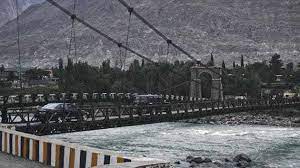
India clearly conveyed to Pakistan that the entire Union Territories of Jammu and Kashmir and Ladakh, including the areas of Gilgit and Baltistan, are an integral part of the country by virtue of its fully legal and irrevocable accession.
Daily Current Affairs Quiz 2021
Gilgit was part of the princely state of Jammu & Kashmir, but was ruled directly by the British, who had taken it on lease from Hari Singh, the Hindu ruler of the Muslim-majority state.
On November 1, 1947, a political outfit called the Revolutionary Council of Gilgit-Baltistan had proclaimed the independent state of Gilgit-Baltistan. On November 15, it declared it was acceding to Pakistan.
In 1974, Pakistan adopted its first full-fledged civilian Constitution, which lists four provinces —Punjab, Sindh, Balochistan and Khyber Pakthunkhwa.
Pakistan-Occupied Kashmir (PoK) and Gilgit-Baltistan were not incorporated as provinces.
One reason ascribed to this is that Pakistan did not want to undermine its international case that the resolution of the Kashmir issue had to be in accordance with UN resolutions that called for a plebiscite.
In 2009, Pakistan brought in the Gilgit-Baltistan (Empowerment and Self-Governance) Order, 2009, replacing the Northern Areas Legislative Council (NALC) with the Legislative Assembly, and the Northern Areas were given back the name of Gilgit-Baltistan.





